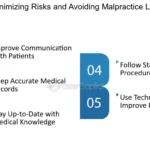Urban areas are facing increasingly complex challenges as they grow and evolve. Public security is at the forefront of these concerns, prompting city planners and policymakers to look for innovative solutions. Modern urban infrastructure now emphasizes not only efficiency and sustainability but also enhanced security measures to protect residents and assets. This evolution in urban design integrates advanced technology, community engagement, and strategic planning to create safer urban environments.
One of the first aspects of this transformation can be seen in the integration of smart technology into public spaces. Cities around the world are implementing smart cameras and sensors that can monitor environments in real-time, providing critical data to law enforcement and emergency responders. These tools help in crowd management, incident detection, and can significantly speed up the response times during emergencies. Moreover, the data collected through these devices contribute to better urban planning, as patterns in public behavior and incident hotspots can be identified and addressed.
Lighting plays a crucial role in public security. Research has shown that well-lit streets and public spaces reduce crime rates and increase the feeling of safety among residents. Modern urban areas are adopting LED lighting which can be adjusted in response to specific conditions and is more energy-efficient. Some cities are even experimenting with adaptive lighting systems that increase brightness when sensors detect motion, thereby deterring criminal activity and improving nighttime visibility.
Public transport systems are also undergoing significant changes to boost security. Transit hubs are equipped with comprehensive surveillance systems and emergency communication devices. Real-time monitoring and alerts help to prevent and quickly respond to incidents. Moreover, redesigning the physical layout of these hubs to eliminate dark corners and create open, visible spaces can reduce crime opportunities, making these areas feel safer for commuters.
To directly control access to sensitive areas, many urban developments now include security gates. These gates serve as effective barriers in residential complexes, parking garages, and various commercial properties. They provide a physical layer of security that can be integrated with technological tools, such as keycards and biometric systems, to ensure that only authorized individuals can enter certain zones. This method not only enhances safety but also offers peace of mind to residents and business owners.
The design of public spaces is another area where urban infrastructure is evolving. The concept of “Crime Prevention Through Environmental Design” (CPTED) is being widely adopted. This approach focuses on designing landscapes and buildings to increase public visibility and minimize hidden and isolated areas. Such designs include the strategic placement of windows, paths, and lighting, encouraging more eyes on the street and fostering natural surveillance.
Community engagement is essential in the evolution of urban infrastructure. Cities that involve residents in security initiatives tend to experience greater success in reducing crime. Community watch programs, local security workshops, and collaboration platforms between civilians and police not only empower residents but also foster a stronger relationship between the community and law enforcement.
Cybersecurity measures are increasingly important in an age where infrastructure is interconnected through the Internet of Things (IoT). Protecting the data collected by urban security systems from cyber threats is crucial. Cities are investing in robust cybersecurity protocols and training for their employees to mitigate the risk of data breaches, which can undermine public trust and safety.
In conclusion, the evolution of urban infrastructure to enhance public security is a multifaceted endeavor that involves a mix of technology, physical design, and community involvement. The integration of smart technologies, strategic design, and direct security measures like security gates, all play a vital role in creating safer urban spaces. As cities continue to grow, the continuous assessment and adaptation of security strategies will be necessary to address the dynamic challenges of urban living. This proactive approach not only helps in managing crime but also enhances the quality of life for its residents, making cities not only more secure but also more livable.


